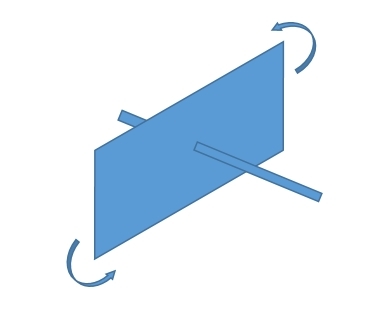RichD80
Industrial
- Dec 5, 2016
- 2
Hi,
I am really struggling to calculate the torque required to rotate a load. Can anyone help me?
Imagine a crane head holding a 600kg load (horizontal to the ground)and the load needing to be rotated. The load is a slab of material around 3m wide and 1.5m high.
The speed can be very slow (1-2 rpm) and it will never complete a full rotation anyway (maybe 200 degrees max) - it will however change direction at times so accerlation can't be too slow (imagine maneuvering the load into position with a joystick and fine movements). I assume I need to calculate the moment of inertia and also and angle of momentum for this however it becomes more complicated.
In some scenarios, it is possible that the load will be off set from centre by around 100kg rather than balanced. I have no idea how to calculate the torque I need my motor / gear solution to produce to turn the load (supported on an external bearing - not the gear shaft) at the given speed and agility.

Thanks for any assistance offered
Richard
I am really struggling to calculate the torque required to rotate a load. Can anyone help me?
Imagine a crane head holding a 600kg load (horizontal to the ground)and the load needing to be rotated. The load is a slab of material around 3m wide and 1.5m high.
The speed can be very slow (1-2 rpm) and it will never complete a full rotation anyway (maybe 200 degrees max) - it will however change direction at times so accerlation can't be too slow (imagine maneuvering the load into position with a joystick and fine movements). I assume I need to calculate the moment of inertia and also and angle of momentum for this however it becomes more complicated.
In some scenarios, it is possible that the load will be off set from centre by around 100kg rather than balanced. I have no idea how to calculate the torque I need my motor / gear solution to produce to turn the load (supported on an external bearing - not the gear shaft) at the given speed and agility.

Thanks for any assistance offered
Richard
